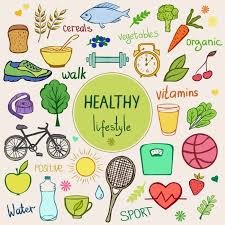Sodium, Blood Pressure, and Your Health: A Comprehensive Guide

Updated at: 2025-02-23 20:58:54 (4 months ago by Melkisedeck Leon Shine)
The Crucial Role of Sodium in Blood Pressure and Overall Health
Sodium, a vital mineral found abundantly in table salt and processed foods, plays a critical role in maintaining bodily functions. However, excessive sodium intake presents significant health risks, primarily affecting blood pressure and cardiovascular health. Understanding the impact of sodium is essential for proactive health management.
The Link Between Sodium and Hypertension: High sodium consumption leads to fluid retention, increasing blood volume and putting extra strain on blood vessels. This elevated pressure, known as hypertension, significantly increases the risk of various health complications.
Cardiovascular Risks Associated with High Sodium Intake: Hypertension is a primary risk factor for heart disease. The increased workload on the heart to pump blood through constricted arteries can lead to serious conditions like heart attacks and strokes. Maintaining healthy sodium levels is crucial for protecting cardiovascular health.
Impact on Renal Function: The kidneys play a crucial role in maintaining the body's fluid balance. Excessive sodium intake forces the kidneys to work harder, potentially causing damage and contributing to kidney disease. Protecting kidney health requires mindful sodium consumption.
Fluid Retention and Bloating: The noticeable bloating and puffiness after a salty meal are direct consequences of sodium's effect on fluid retention. This discomfort highlights the importance of moderated sodium intake.
Sodium's Influence on Bone Health: Studies suggest a correlation between high sodium intake and increased risk of osteoporosis. Excessive sodium can interfere with calcium absorption, weakening bones and increasing fragility.
Effects on Cognitive Function: Emerging research indicates that high sodium levels might negatively impact brain health, potentially contributing to cognitive decline and increasing dementia risk. A low-sodium diet is recommended to support optimal brain function.
Sodium and Other Health Conditions: Excessive sodium consumption has been linked to an elevated risk of various health conditions, including stomach cancer, kidney stones, and even asthma. Managing sodium intake contributes to overall well-being.
The Importance of Potassium: Balancing sodium intake with sufficient potassium is critical. Potassium aids in counteracting sodium's effects on blood pressure by facilitating the excretion of excess sodium through urine. Including potassium-rich foods like bananas, avocados, and spinach in your diet is highly beneficial.
Hidden Sources of Sodium in the Diet: It's crucial to recognize that sodium isn't solely derived from salt shakers. Many processed and packaged foods contain surprisingly high sodium levels, often exceeding the amount added during cooking. Carefully checking food labels and opting for low-sodium alternatives is paramount.
Moderation as the Key to Sodium Management: Rather than complete elimination, moderation is key. A balanced approach to sodium intake focuses on mindful consumption and avoiding excessive amounts.
Exploring Flavorful Sodium Alternatives: Reducing sodium intake doesn't mean sacrificing flavor. A wide range of herbs, spices, citrus juices, and vinegars offer delicious alternatives to salt, adding zest to meals without the detrimental effects of excessive sodium.
The Advantages of Home Cooking: Preparing meals at home allows for better control over sodium content. This approach ensures the use of fewer sodium-based seasonings and encourages creative exploration of healthier flavors.
Seeking Professional Guidance: If you have concerns about your sodium intake or existing conditions like hypertension, consulting a healthcare professional is crucial. Personalized guidance is essential for effective sodium management.
The Rewards of a Low-Sodium Diet: Adopting a low-sodium diet offers substantial health advantages, including lower blood pressure, reduced risk of heart disease, improved kidney function, and enhanced overall well-being. Prioritizing a low-sodium diet contributes to a healthier lifestyle.
Conclusion: Sodium is an essential mineral, but its excessive intake can have severe health consequences. By being aware of sodium consumption, including potassium-rich foods, exploring alternative seasonings, and practicing moderation, individuals can significantly improve their health and maintain healthy blood pressure levels. A balanced approach to sodium intake is key to a healthier and longer life.
We encourage you to share your experiences and strategies for managing sodium intake in the comments below. Your insights can inspire others on their journey to better health!




